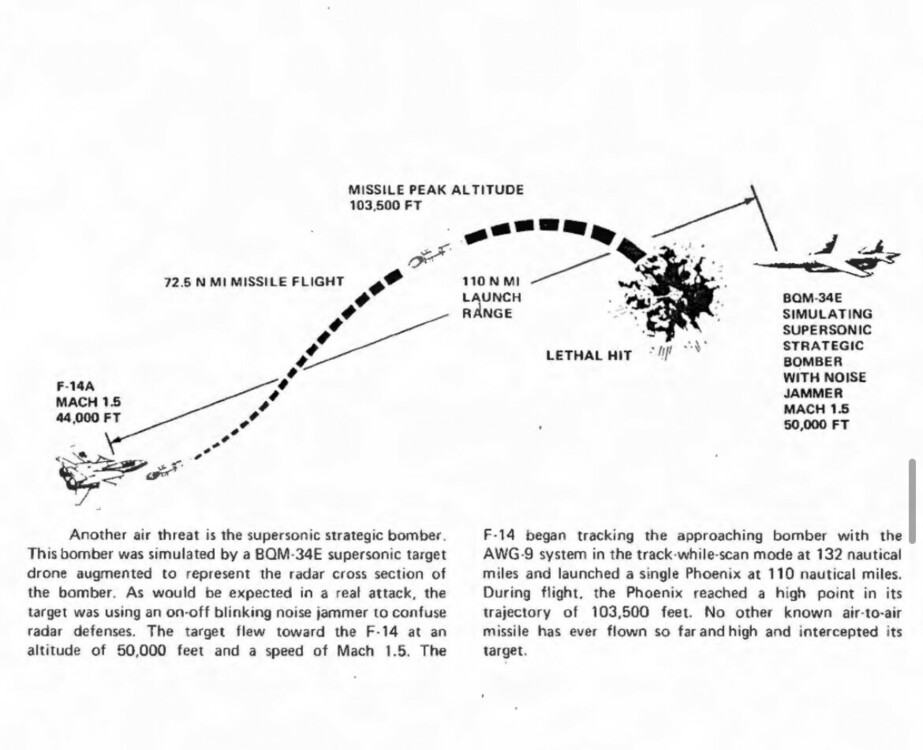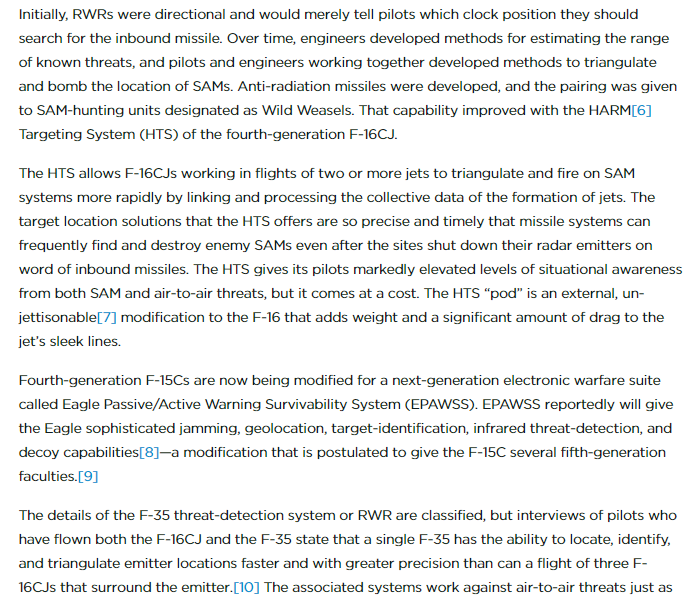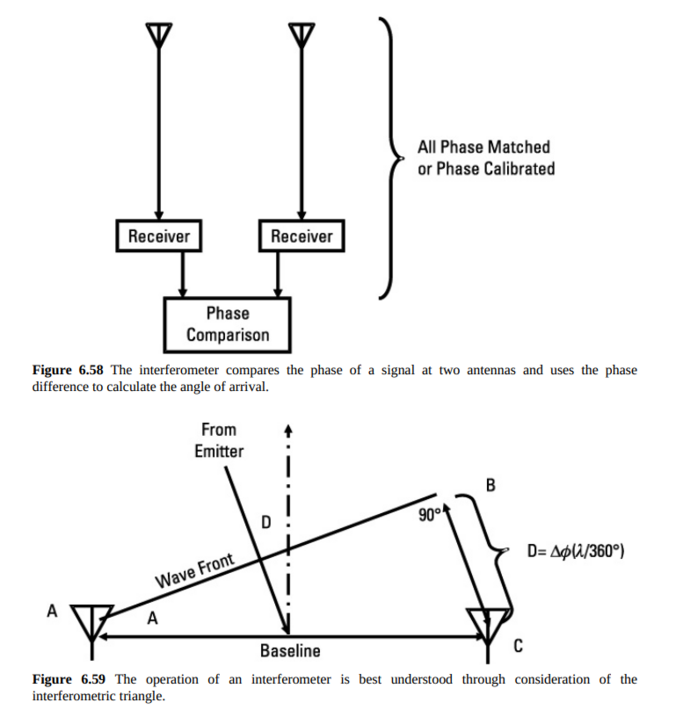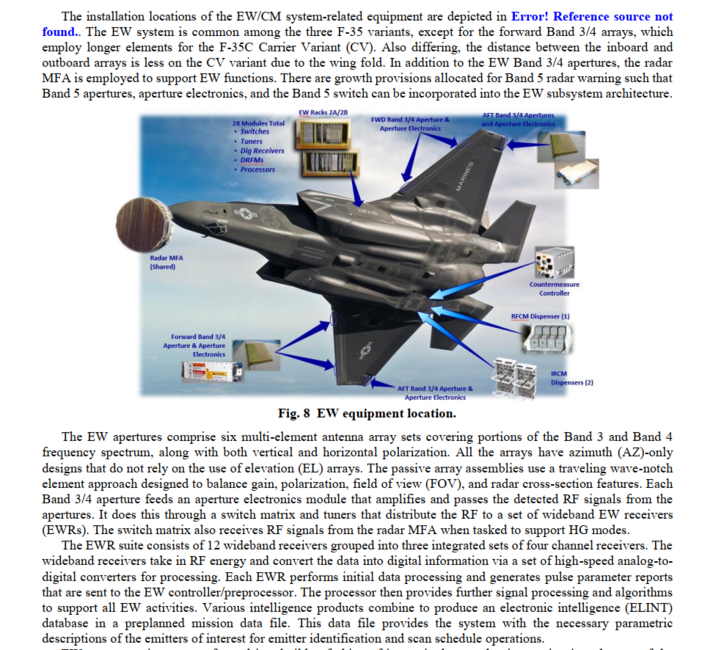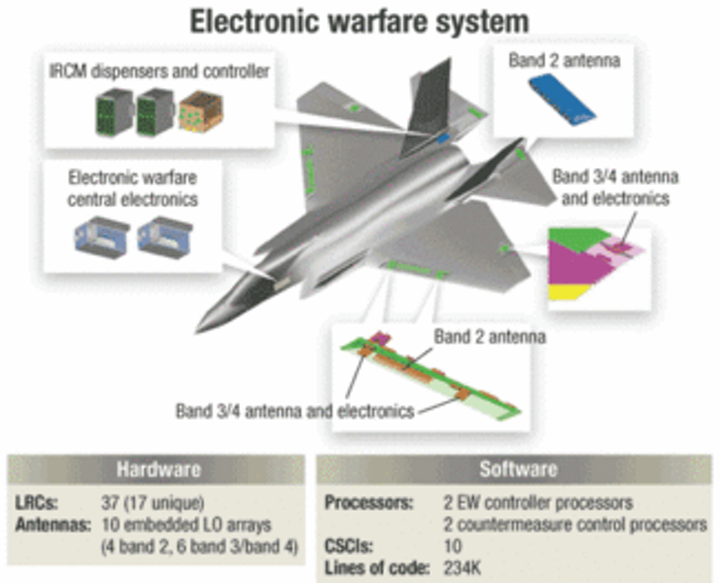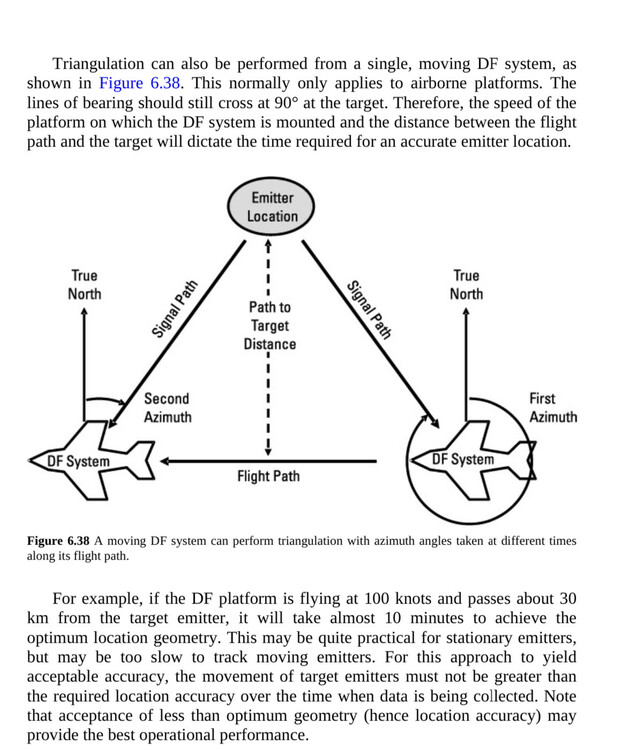

garrya
Members-
Posts
231 -
Joined
-
Last visited
-
Days Won
1
Content Type
Profiles
Forums
Events
Everything posted by garrya
-

F-14 v2.8 - Jamming, JESTER, and Headless Bodies!
garrya replied to Cobra847's topic in DCS: F-14A & B
Is it in either NAVAIR 01-F-14AAD-1 or NAVAIR 01-F-14A-1 or NAVAIR 01-F-14AAP-1.1 ? I acquire several F-14 manual but couldn't find any information about the ADR -

F-14 v2.8 - Jamming, JESTER, and Headless Bodies!
garrya replied to Cobra847's topic in DCS: F-14A & B
Thanks alot, how did you learn about ADR?, was a pilot talking about it or did it come from manual? -

F-14 v2.8 - Jamming, JESTER, and Headless Bodies!
garrya replied to Cobra847's topic in DCS: F-14A & B
So I can understand that you can get target angular direction in JAT mode for ADR estimation. But how do you get target speed and altitude though?. Wouldn’t noise jammer deny range and velocity information? Or basically the Rio just make a guess? I mean how does he even guess the altitude when the only available data is the angle? . It also kinda strange, I can’t find any document talking about ADR, is it same as kinematic ranging on F-15? -

F-14 v2.8 - Jamming, JESTER, and Headless Bodies!
garrya replied to Cobra847's topic in DCS: F-14A & B
ADR stand for altitude difference ranging right? I have always confused about how it work. Apparently, it allowed range measurement in JAT mode, and thus allow missile to be lofted in HoJ mode. Therefore allow stuff like this: AWG-9 clearly couldn’t burn through a noise jammer at such distance -

F-14 v2.8 - Jamming, JESTER, and Headless Bodies!
garrya replied to Cobra847's topic in DCS: F-14A & B
Wow that very interesting how far the AWG-9 can burn through jamming. Might i know what is the source? -
I understand that ESM/ELINT measurement are not supposed to be absolute accurate, but I find them somewhat similar to a radar, the angular accuracy of radar is also depend on their beamwidth which is often 2-3 degrees for fighter radars. (Of course radar get range measurement instantly unlike ESM/ELINT system) I get that multiple F-16 can be linked together and measure distance to target very quickly thanks to TDOA. But I’m more curious about single ship geolocation because apparently, according to pilot, a single F-35 can geolocate target quicker and more accurate than 3 F-16
-
I do understand ESM system work by comparing phase different and resolve the angle from that. So it would need at least 2 antenna in any flat plane to resolved the direction However, recently, I was reading a paper released by LM, they said that their F-35 used an Azimuth only design (basically a linear horizontal array instead of a planar array), so it can only resolve target in azimuth and I find that to be a terrible decision, because by knowing elevation like the APR-47 on F-4G, you can measure the distance instantly in seconds Where as with azimuth only sensor, it is neccessary to fly for 30 seconds at the very least. So I just wonder the HTS is more similar to F-4 or F-35 system
-
This might sound like a very dumb question, but does the ESM system on F-4G (APR47) and F-16CJ (ASQ-213) let the pilot know the threat is below or above them? (aka knowing the emitter elevation) Does the RWR screen get messed up if the pilot spin his aircraft to the side? (his main wing is perpendicular to the ground)
-
So the HTS pod on F-16 (or all RWR) can find target azimuth but no information on elevation, there is no information on whether target is at lower or higher altitude. but what if I roll the aircraft to the side?. Like with half a roll while pointing the nose toward the emitter. Wouldn’t the sensor oriented in the way that allow me to find target elevation, and thus based on my own altitude, I can calculate distance to target?
-
F-35 eye-watering capability: instantaneous turn rate finishing 135 degrees in 3 seconds Podcast: Behind The F-35’s New Aerial Tricks Aviation Week & Space Technology Apr 03, 2019 Since first flight of the original F-35 test aircraft more than 12 years ago, the U.S. military has given the public only one glimpse of the aircraft’s hotly contested dogfighting chops — and that was nearly two years ago at the Paris Air Show. That’s changing this year. Defense Editor Steve Trimble talks with U.S. Air Force F-35 Demo Pilot Capt. Andrew “Dojo” Olson about the new display’s public debut on March 30 in Melbourne, Florida. http://m.aviationweek.com/defense/podcast-behind-f-35-s-new-aerial-tricks?NL=AW-05&Issue=AW-05_20190404_AW-05_51&sfvc4enews=42&cl=article_2&utm_rid=CPEN1000002990714&utm_campaign=19096&utm_medium=email&elq2=46ce449c64f94ecea82172645d23cd46
-

Why Red Flag exercises are not indicative of aircraft performance
garrya replied to rrohde's topic in Military and Aviation
It say quite clear right there what it is "sustain level turn", besides, the chart represents sustain G -

Soviet Made Vietnam Era Mig-21 shoot down modern Fighters
garrya replied to pepin1234's topic in Military and Aviation
Until now, the evidence presented by IAF are either very dubious or proven to be false http://www.f-16.net/forum/viewtopic.php?f=37&t=55055&start=30 -
You don't need to mount missile backward
-
There are a lot, you just need to look at the right place :P This sound like shameless self-advertising, but if you are interested in radar and RWR, I am sure this will entertain you https://basicsaboutaerodynamicsandavionics.wordpress.com/
-
I meant F-135 also has a bypass ratio of 0.57 and it is optimized to much slower speed regime. Engines optimized to high speed such as F-119, M88, EJ200 often have a lower ratio.
-
Logically, D30-F6 engine on Mig-31 should be optimized for high speed,so why is its bypass ratio so high?
-
Turn performance of F-5E vs Kfir at various altitude: At 5000 ft ITR (instataneous turn rate) of Kfir is 20.9 degrees/seconds, ITR of F-5E is around 20.1 degrees/second STR (sustained turn rate) of Kfir is 11.9 degrees/second, STR of F-5E is around 12.9 degrees/second At 15000 ft ITR of Kfir is 16.8 degrees/seconds, ITR of F-5E is around 16.7 degrees/second STR of Kfir is 8.7 degrees/second, STR of F-5E is around 10.1 degrees/second At 25000 ft ITR of Kfir is 13 degrees/seconds, ITR of F-5E is around 14 degrees/second STR of Kfir is 6 degrees/second, STR of F-5E is around 7 degrees/second In short, turning performer of Kfir is inferior to F-5E in most altitude. That because the delta wing of Kfir has more gradual CL/alpha curve than the near straight wing of F-5E (and for extension F-20), at low altitude then Kfir can get higher ITR by going higher AoA (because delta wing have higher stall AoA), but at higher altitude, where air is thinner, you need to go faster to generate enough lift, it harder to turn at high AoA, therefore both ITR and STR of Kfir is inferior to F-5E at altitude greater than 15000 ft
-
Will Israel F-35I carry these?: Rampage Sparrow
-
There are plenty of different ways for aircraft to deal with SAM, just to name a few 1- Standoff missiles: LRASM (1000 km), JSM (550 km), JSOW-ER (550 km), AARGM-ER ( >200 km) 2- Stealth aka VLO: B-2, B-21, F-35, F-22, J-20 3- Jamming: MALD-X, ALE-70, Brite Cloud, EA-18G 4- Agility: STR, ITR 5- Radar horizon: Nap of the earth flight So your strawman argument about "how aircraft are useless because SAM can hit satellite" is total nonsense. Nice try, however while dropping some physic related word and a smug remark may make you sound smart on Youtube comments section, it certainly doesn't work here, especially when you don't understand what you are talking about. Doppler effect does not work differently between two moving assets vs between one stationary and one moving asset, Doppler effect work entirely depends on the relative "closing" velocity between 2 assets. For closing target => Doppler shift between 2 moving targets is higher. For fleeing target => Doppler shift between 1 stationary and one moving target is higher For target flying tangent to the radar => Doppler shift is close to zero in both case. In other words, aircraft radar often have a harder time detecting/tracking target flee from them or fly perpendicular to their beam, whereas ground target often only have issues with target flying perpendicular to their beam. The effect is negligible for X band frequency and lower http://lmgtfy.com/?q=13000+meters+to+feet You don't seem to understand that SAM are so much bigger than AAM For example: AIM-120 weight 152 kg whereas SM-6 weight 1500 kg
-
If you haven't heard about radar that can lock target from that distance then you probably live in a cave. Over 58 year ago, U-2 was shot down by S-75 missile when it was cruising at over 70,000 feet. https://en.m.wikipedia.org/wiki/Francis_Gary_Powers To add insult to the injury, in 2008, a satellite was shot down by SM-3 missile at altitude of 240 km (787,402 feet) https://en.m.wikipedia.org/wiki/USA-193 Oh i do know enough about radar to write a comprehensive guide on them https://basicsaboutaerodynamicsandavionics.wordpress.com/2016/04/12/radar-electronic-countermeasure/ https://basicsaboutaerodynamicsandavionics.wordpress.com/2016/08/11/radar-fundamentals-part-ii/ https://basicsaboutaerodynamicsandavionics.wordpress.com/2016/03/29/electronic-countermeasure-ecm/ i don't often brag but i can assure you, i know far more about radar than you. There is not a single physics laws that would limit locking range from stationary object to 13 km, if that was the case, ballistic missile intercept would never been possible. FYI, 13 km is 42,650 feet, not 36,000 feet and stratosphere edge is at 30 km and not 13 km.
-

Close Air Support Fly-off Farce: F-35 Versus A-10
garrya replied to m0j0NL's topic in Military and Aviation
Details of this article originally came from POGO, and of course POGO is quite infamous for their BS nonsense toward F-35 http://www.pogo.org/straus/issues/weapons/2018/close-air-support-fly-off-farce.html They are given the same amount of time so that they can judge their relative efficiency in CAS, while A-10 may have longer endurance, it can only fly in a permissive environment, in which case, F-35 can rely on tankers to refuel. This is stupid, why should F-35 operate under 1000 ft when it has 360 degrees IIR automatic target detection/tracking + SAR? imagine having a death match between a cowboy and a medieval knight and someone complain that the cowboy doesn't get close to fight in hand combat. Regarding, the so-called "inadequate loadout", internally, F-35 can carry 8 SDB II, and when the threat of IADS isn't very high, F-35 can carry 24 SDB II ( SDB II can be replaced by the same number of SPEAR or JAGM-F ), 24 targets per sorties is far more than enough With or without 2 bombs, F-35 still has advantages in acceleration rate, sustained turn rate, instantaneous turn rate, roll rate, climb rate and speed over A-10. Beside, each PGU-14 round that A-10 carry weight 1.62 lbs, so lowing the number of round that A-10 carry from 1174 down to 400 rounds will reduce its weight by 1254 lbs. So guess what, using their logic, actually the A-10 was given maneuverably advantage their earlier paragraph literally said they loaded A-10 with laser-guided bombs, so they can't even be consistent Hmm, how can they know whether there is any specialized testing equipment?, iam skeptical of that. Anyway, unlike A-10, and F-35 can easily stay outside the engagement envelope of AA canon and shoulder-fired missile, even when F-35 is inside the engagement envelope of AA canon and shoulder-fired missile, DAS let pilot know immediately when he is being attacked. Ironic, because A-10 canopy looks like this while F-35 canopy looks like this Furthermore, DAS can find and track targets for pilots, unlike MK-1 eye ball of A-10 pilots, color doesn't affect infrared sensor ,and as the process can be automatic, it doesn't increase pilot work load anywhere as much as A-10 pilot finding target manually fHZO0T5mDYU In bad weather, the MK-1 eye ball of A-10 pilot will be utterly useless while SAR and GMTI of APG-81 will be just fine as normal F-35 has various measure against low-frequency radar, and contrary to popular belief, low-frequency radar doesn't automatically no sell stealth F-117 radar scattering measurement in anechoic chamber still yield very small RCS value even at low frequency Furthermore, Zoltán Dani (former commander of the 3rd battery which shot down an F-117 Nighthawk during the Kosovo War) also said that he can only detect F-17 at distance 30 km or closer and only one out of 4 frequency he used is effective against F-117 https://forums.eagle.ru/showthread.php?t=218358 moreover, against any kind of more than average air defense, then A-10 is as good as flying targets


